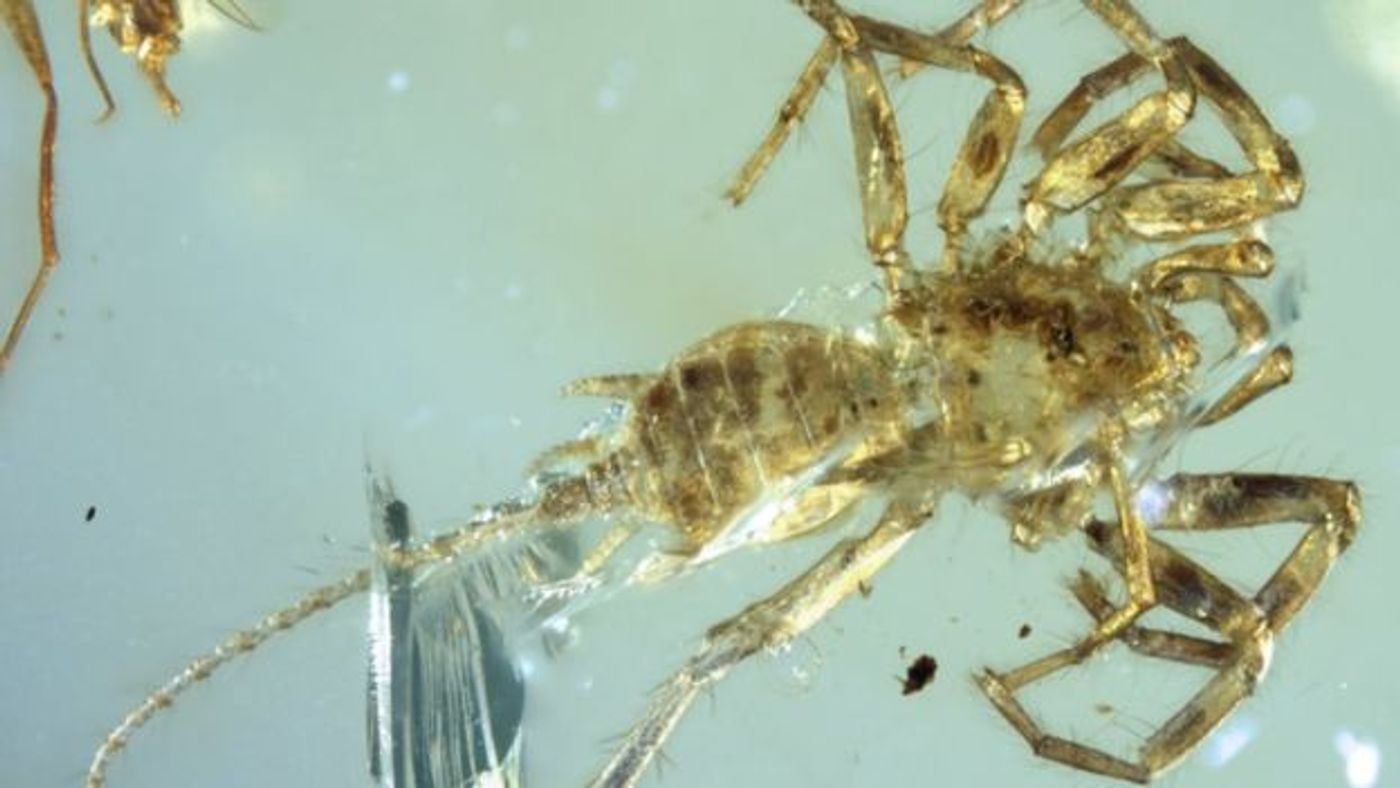Fossil of 100 Million-Year-Old Tailed Spider Baffles Researchers
Spiders, love them or hate them, can be found all around the globe today. On the other hand, discovering some of the earliest descendants of modern arachnids to learn more about how they’ve evolved continues to prove challenging for researchers everywhere.
Image Credit: University of Kansas
In a possible stroke of luck, researchers from the University of Kansas stumbled upon an arachnid encased inside of a 100 million-year-old hunk of amber from Myanmar. They describe the unusual circumstances surrounding the ancient fossil in a new study published in the journal of Nature Ecology and Evolution.
So what makes the spider, subtly named such an oddity? Predominantly how it sports a flagellum (tail) reminiscent of what you’d find on modern scorpions, which also happen to be arachnids.
Image Credit: University of Kansas
Scientists don’t know of any living tailed spiders like the one described in the study. That said, not only is it a new species, but it could also tell a compelling story about how modern scorpions and spiders came to be.
"Any sort of flagelliform appendage tends to be like an antenna," said study co-author Paul Selden from the University of Kansas.
"It's for sensing the environment. Animals that have a long whippy tail tend to have it for sensory purposes."
Related: Are spiders really omnivores?
Despite how researchers aren’t aware of any living tailed spiders in existence today, we’ve found them in fossilized forms before. Several specimens have surfaced throughout Myanmar over the years, and researchers do not doubt that there could be others.
Furthermore, we know very little about the forest where this amber-encased fossil was found. That said, it’s entirely possible that Chimerarachne yingi still roams the Earth to this very day and we just don’t know it yet.
The lone fossil doesn’t tell us much about the spider’s lifestyle, but being encased in amber hints that it must’ve spent a lot of time around rocks or trees. Then again, we don’t even know if it could weave silk just like many modern spiders can. Selden explains:
"Amber is fossilized resin, so for a spider to have become trapped, it may well have lived under bark or in the moss at the foot of a tree."
Related: Newly-discovered spider species from India looks just like the sorting hat from Harry Potter
There’s a lot to learn from the unique fossil for sure, but only by studying the environment where the fossil came from might we answer some of the remaining questions. In the meantime, it should be interesting to see what other fossils pop up from the Myanmar region.
Source: University of Kansas










